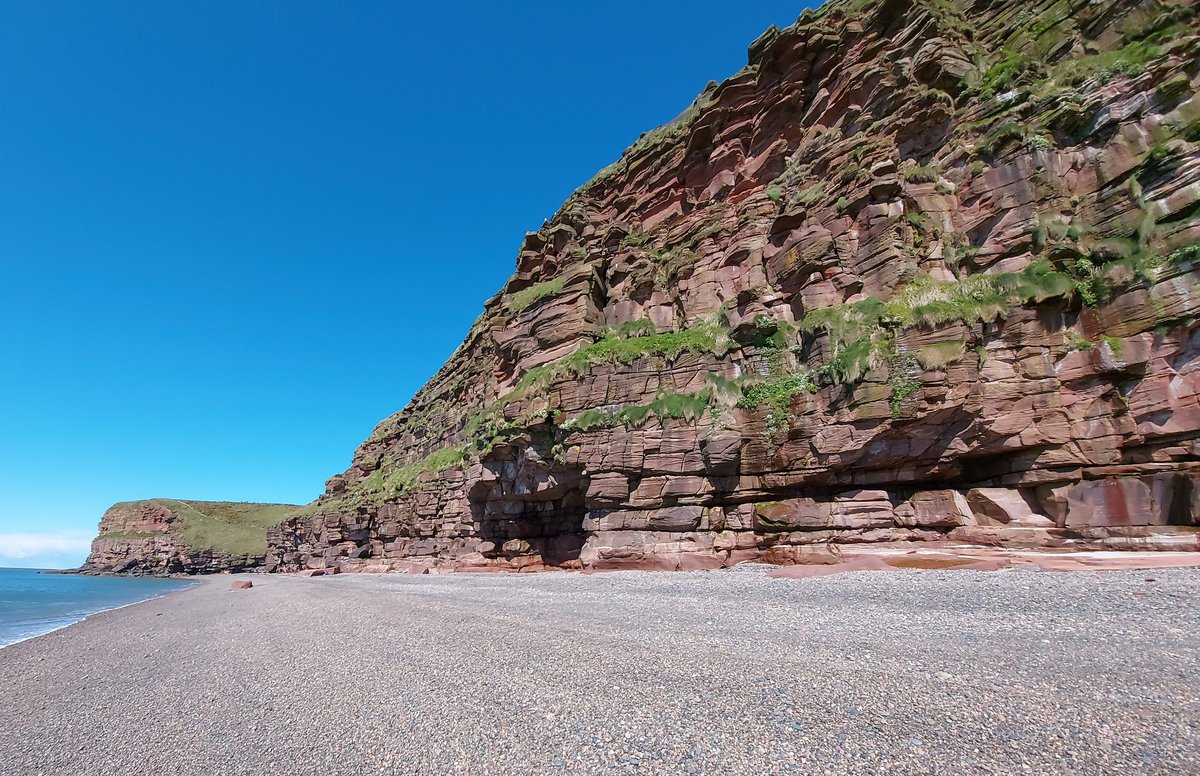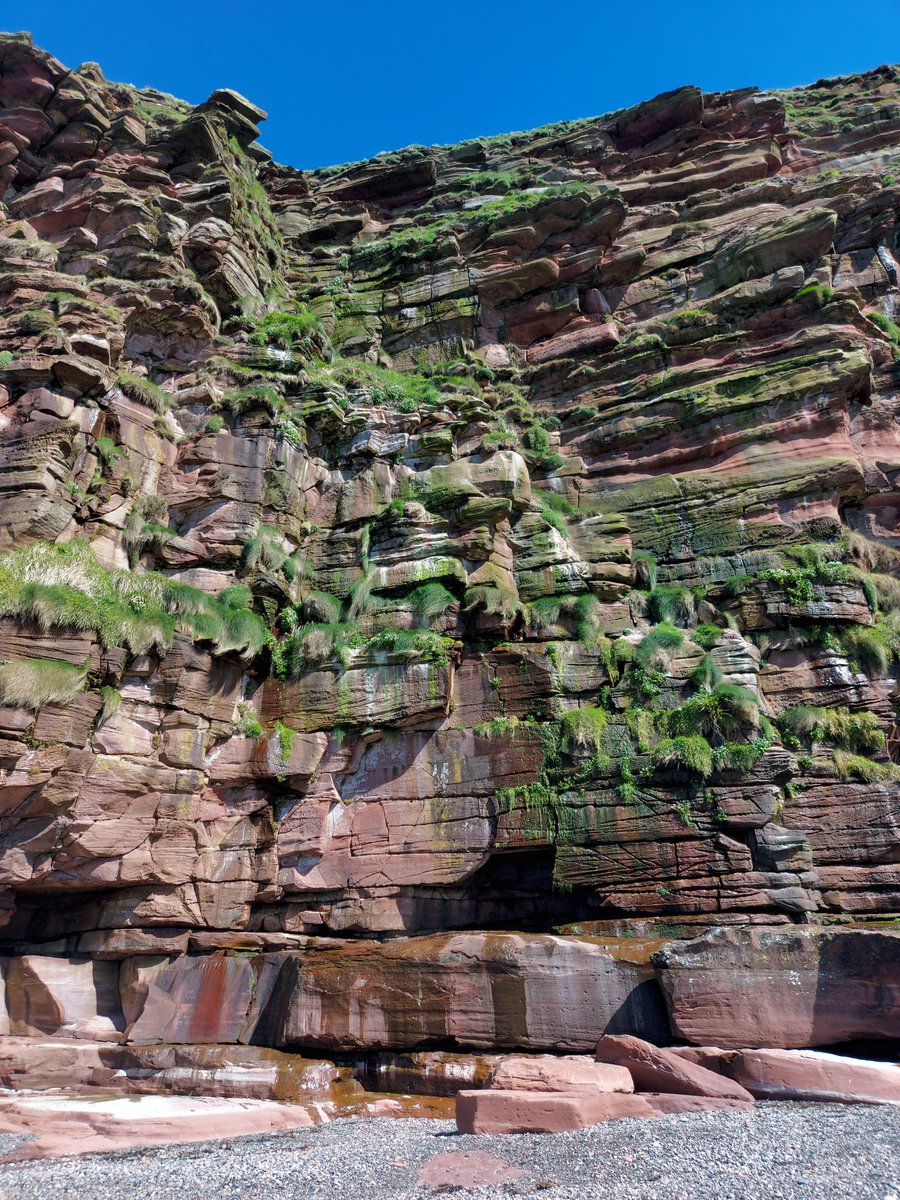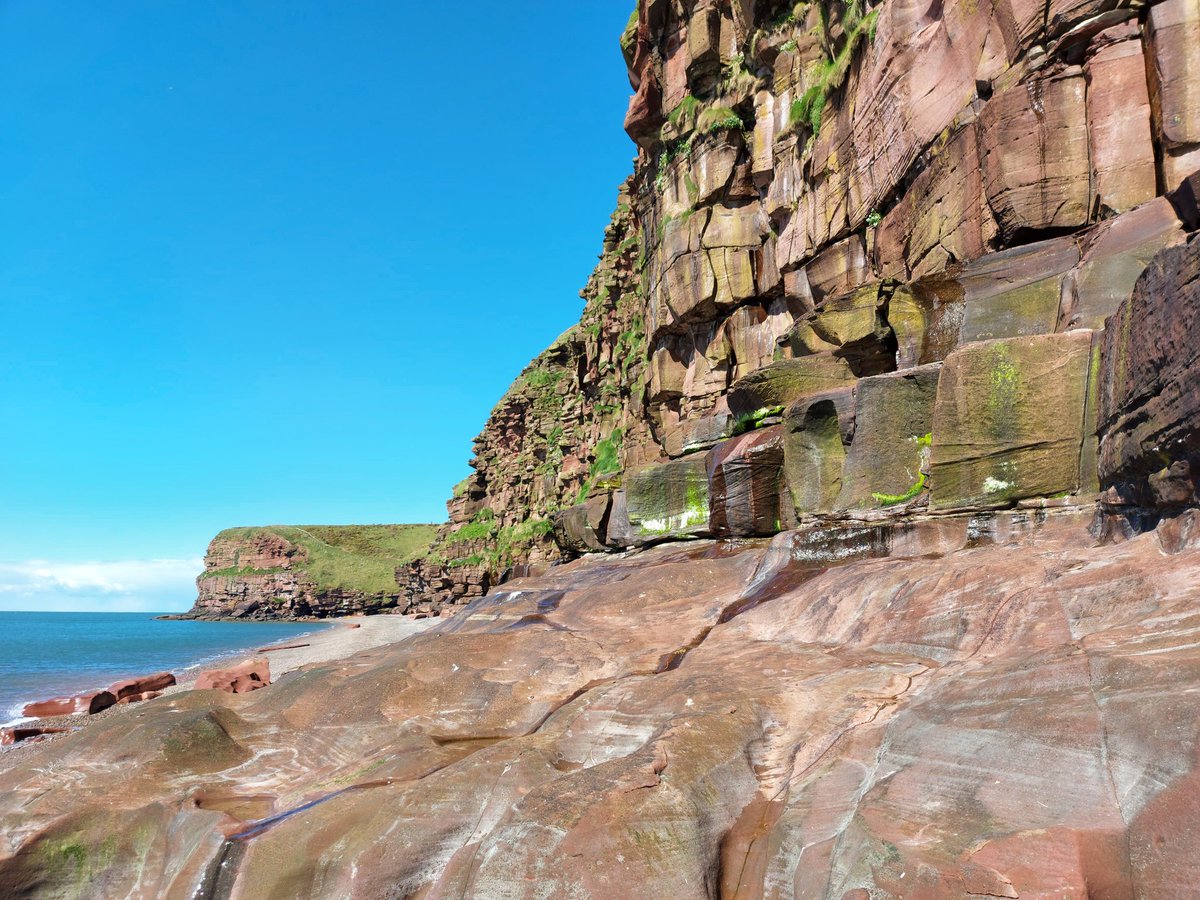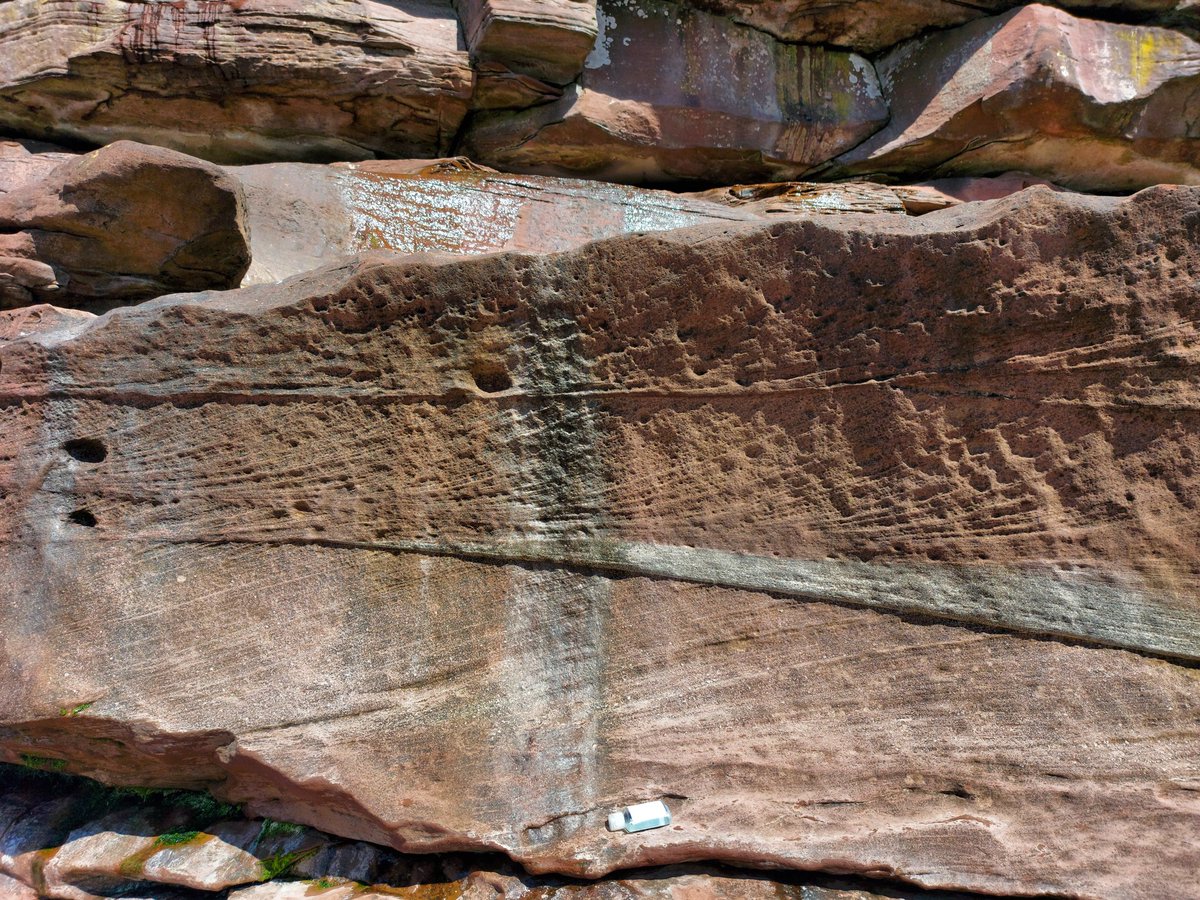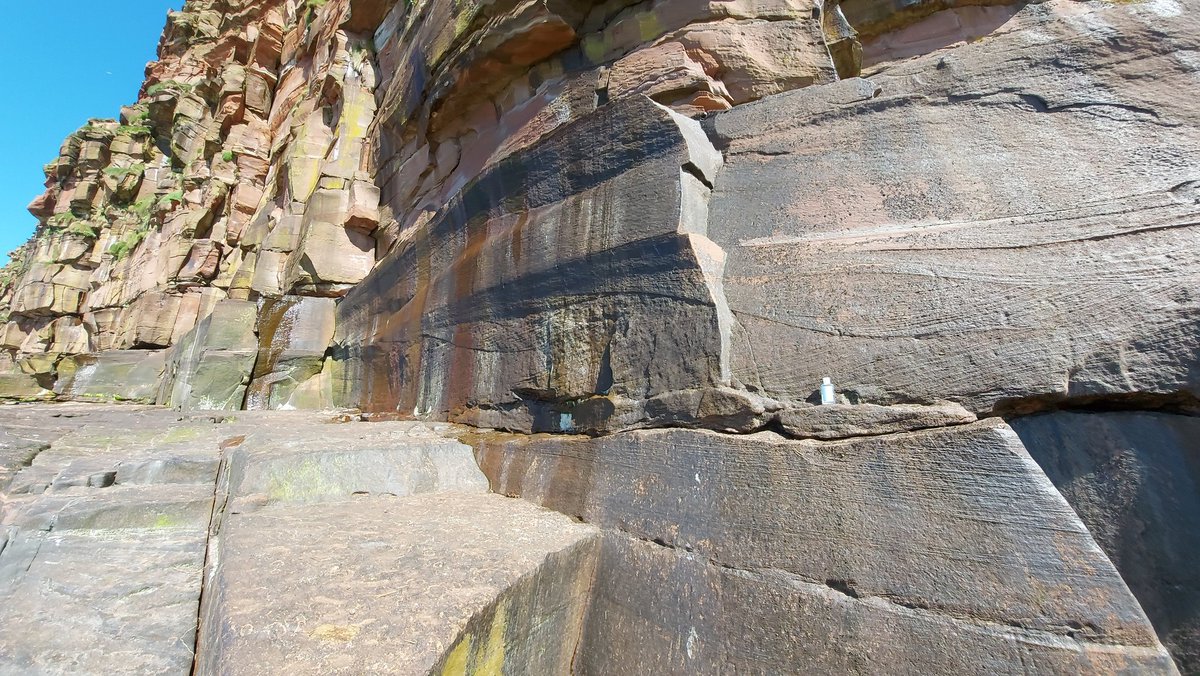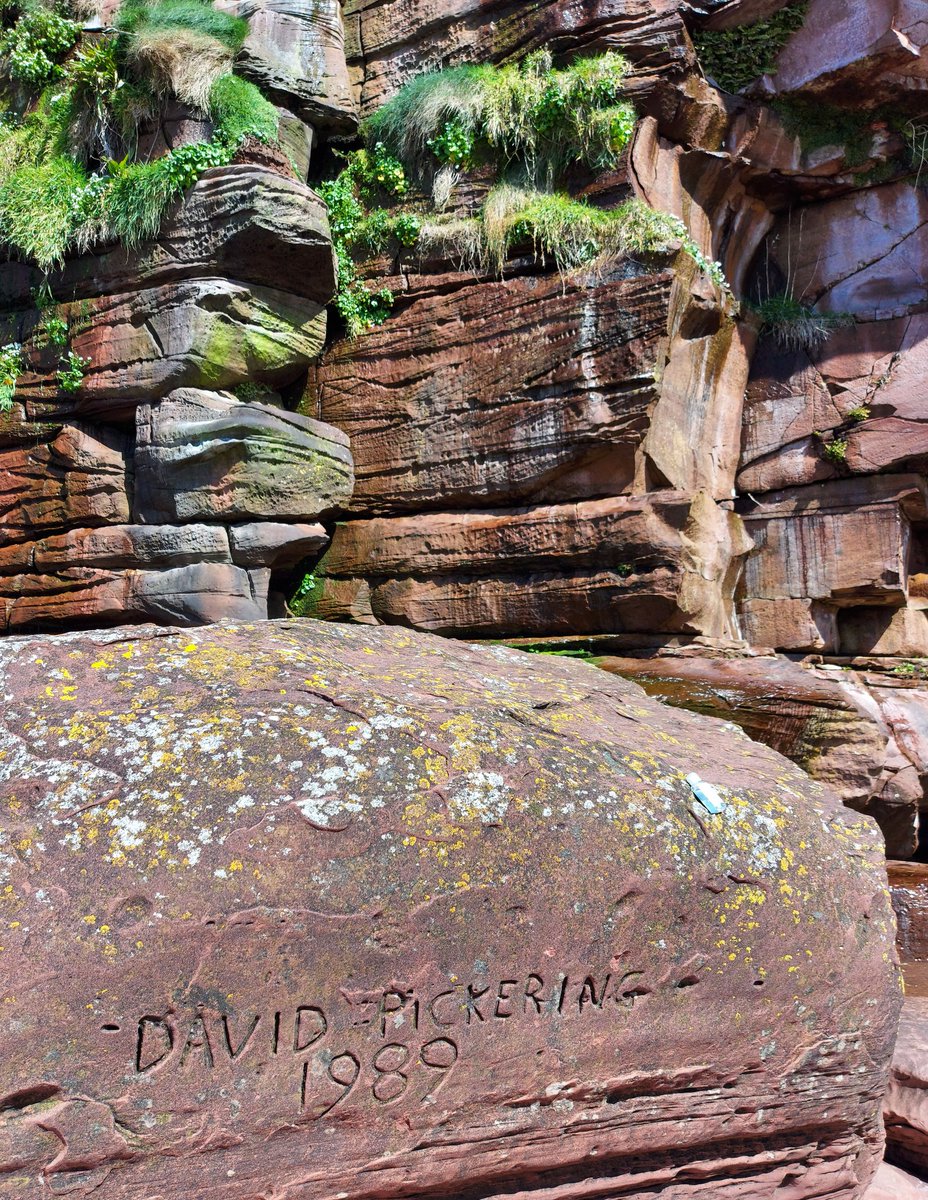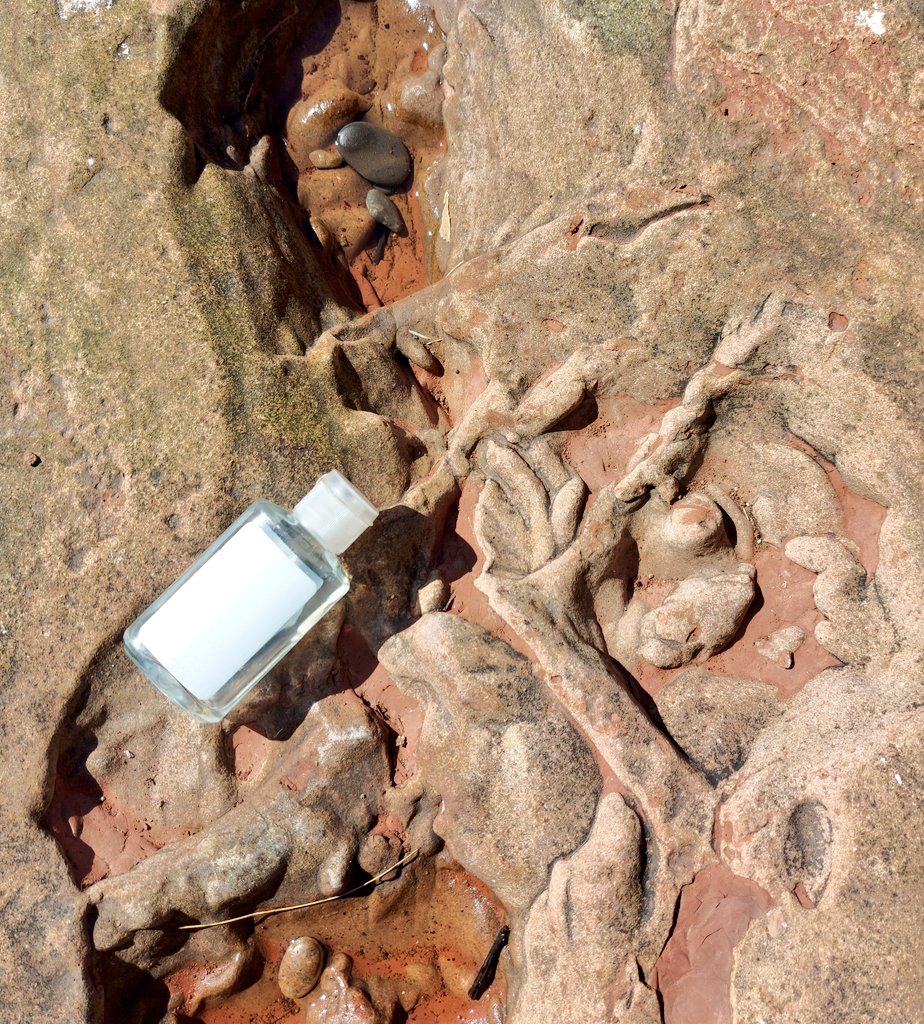~230 million years ago the UK was a harsh environment in the middle of the supercontinent of Pangea. Storms over mountains to the west caused flash floods, eroding sediment onto a river floodplain. Today these form rocks of the St Bees Sandstone exposed at Fleswick Bay, Cumbria.
Triassic-age riverine sediments in the UK are often lumped together as & #39;New Red Sandstone& #39;, and overshadowed by fossil-rich marine rocks from the Jurassic and Cretaceous periods. Because they don& #39;t contain obvious age-diagnostic fossils, and they mostly all look the same..
..but these rocks are packed with beautiful sedimentary structures (cross-bedding) that show the current-direction and even depth of meandering >200 Myr old Pangean river channels.
Although the St Bees lives up to its & #39;New Red Sandstone& #39; reputation of being unfossiliferous sand, perhaps life did find a way to leave evidence of animals burrowing through the Triassic floodplain? What do you think @fossiliam..?

 Read on Twitter
Read on Twitter